-
 Published: Mar 31, 2023
Published: Mar 31, 2023
-
 38 min. read
38 min. read
-
 Abby Fields
Abby Fields Branded Content Specialist
Branded Content Specialist
- Abby is a data-driven content marketer with certifications in inbound marketing and content marketing. She’s written hundreds of articles covering digital marketing topics — a few of her specialties include first-party data, marketing and data analytics, marketing strategy optimization, and SEO. When she isn’t writing or optimizing content, Abby loves to spend time reading the latest mystery novel, having movie marathons with lots of snacks, and jamming out to Shania Twain.
Wondering how to use first-party data for marketing? Have a collection of first-party data and have no idea how you should use it to improve your marketing strategies? Not sure how you can use a programmatic advertising strategy to drive revenue?
If you answered yes to those questions, you’re in the right place.
Did you know that third-party data will soon be gone for good? It’s true. Companies like Google plan to completely phase out third-party cookies in the near future.
That’s why there’s no better time than now to start collecting and leveraging first-party data to ensure your marketing campaigns reach and convert your target audience.
On this page, we’re diving into 55 first-party data examples and top programmatic advertising strategies for business-to-business (B2B), business-to-consumer (B2C), and ecommerce companies.
So keep reading to discover how to use first-party data for advertising and marketing success!
- First-Party Data and Programmatic Advertising Introduction and Refresher
- B2B First-Party Data Examples and Strategies
- B2B Programmatic Advertising Examples and Strategies
- B2C First-Party Data Examples and Strategies
- B2C Programmatic Advertising Examples and Strategies
- Ecommerce First-Party Data Examples and Strategies
- Ecommerce Programmatic Advertising Examples and Strategies
Oh, and if you want more marketing tips and expert advice from our award-winning marketing specialists, sign up for our free Revenue Weekly newsletter!
Don’t miss our Marketing Manager Insider emails!
Join 200,000 smart marketers and get the month’s hottest marketing news and insights delivered straight to your inbox!
Enter your email below:
Inline Subscription Form – CTA 72
“*” indicates required fields
(Don’t worry, we’ll never share your information!)
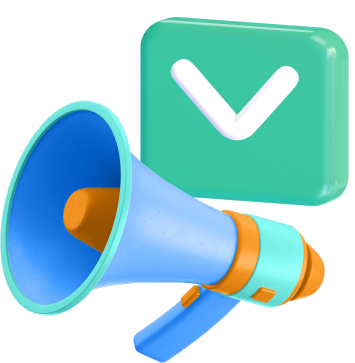
First-party data and programmatic advertising: A complete introduction & refresher
Before we dive into our top examples and strategies for first-party data and programmatic advertising, let’s first go over a quick introduction and refresher on what those two terms are and how they can benefit your company.
What is first-party data?
First-party data is information you collect directly from your website visitors, social media followers, leads, and current customers. It can include their names, email addresses, phone numbers, website activity and interactions, interests, and more.
What are the benefits of using first-party data?
You might have heard that large companies like Google plan to phase out third-party cookies soon. That means you’ll need to rely on first-party data to learn about your audience and launch targeted advertising campaigns.
By collecting and leveraging first-party data now, you can be one step ahead and prepared when the phase-out is complete.
Using first-party data also helps you gather valuable insights about your target audience since you’ll collect information directly from the people who interact with your brand.
That means you can create detailed buyer personas, craft personalized marketing messages tailored to your audience’s unique interests, launch data-backed campaigns designed to reach your highest-value consumers, and more.
How to collect first-party data
There are several ways you can collect first-party data directly from your audience, including:
- Implementing lead generation forms, like email sign-up and contact forms, on your website
- Using data-tracking tools, like Google Analytics or RevenueCloudFX
- Utilizing customer relationship management (CRM) software, like Nutshell
- Conducting customer surveys
- Using audience insight analytics features on social media platforms like Facebook or Instagram
- Analyzing past purchases and sales to gather information about your customers
- And more
Start Collecting First-Party Data with RevenueCloudFX and Nutshell
What is programmatic advertising?
Programmatic advertising is an automated strategy for online advertising. When you use programmatic advertising, you can take advantage of powerful features like artificial intelligence (AI), machine learning, and real-time bidding to automate ad management, the creation of ads, and purchasing ad space.
What are the benefits of programmatic advertising?
Programmatic advertising helps save you and your team a ton of time by automating repetitive advertising tasks, like buying ad space and placing bids.
As a result, your team can free up valuable time on their to-do list and focus on other important business tasks, like closing deals.
This automated advertising strategy also allows you to use data-driven insights to implement campaigns designed to reach and convert your target audience.
B2B first-party data examples and strategies
Wondering how your B2B company can use first-party data to drive incredible marketing results and a higher return on investment (ROI)?
We’ve got you covered. Keep reading for a breakdown of B2B first-party data examples and how you can leverage data like:
Company industries
Have a plethora of data about your leads’ and current clients’ industries and aren’t sure what to do with it?
Here are four B2B first-party data strategies for using company industry data:
1. Understand which industries provide the most value and optimize your marketing strategies accordingly
Use your leads’ company industry information to determine which industries provide the most value for your business. Which industries produce the most sales and revenue? Which ones have the highest conversion rates?
Use your first-party data to answer those questions. Once you have a list of industries that drive the most revenue for your company, you can:
- Identify and score leads from your highest-value industries
- Prioritize nurturing the leads that have the potential to drive the most revenue for your business
- Launch marketing campaigns, like pay-per-click (PPC) ads and custom content, to reach your high-value prospects
2. Segment and personalize email messages
You can also use industry data to segment your email list and create more personalized email marketing messages.
Use the segment and filtering features in your email platform to group your email subscribers together by industry. Once you have industry-specific email lists, you can start personalizing your email messages just for that industry.
For example, if you create an email list for clients or leads in the retail industry, you can recommend products or services specifically appealing to them. You can also create messages that show how your products or services alleviate pain points specific to companies in retail.
3. Create industry-specific content
When you collect and analyze company industry information from your website visitors, leads, and current customers, you’ll better understand which industries are most interested in your products or services.
With this knowledge, you can create industry-specific content across your website. For example, you might create separate pages that detail your services for that industry.
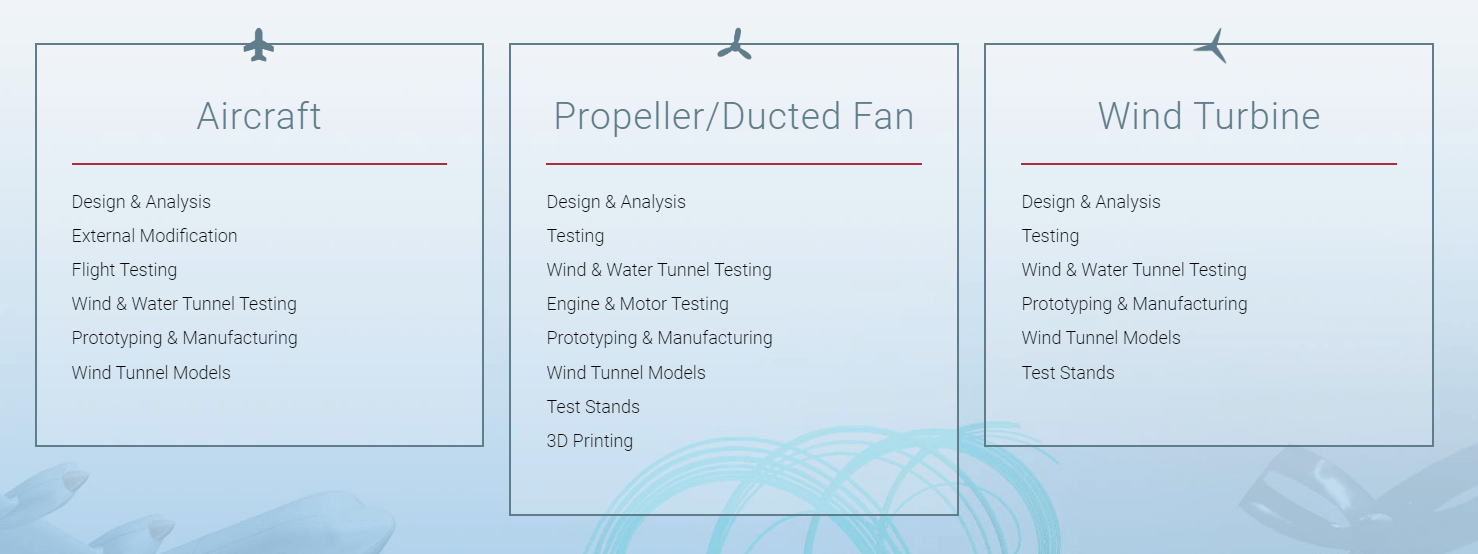
Let’s say you determine that companies in the retail and technology industries contact your accounting firm the most.
In that case, you can create pages like “accounting services for retail companies” and “accounting services for technology companies.”
Creating industry-specific content can help your highest-value prospects easily find you online. For example, when you create more content like blog posts or articles, you’ll give your website more opportunities to show up in the search results when your audience searches for those topics, driving more traffic to your website.
Plus, you can personalize your content to communicate how your products or services specifically provide solutions for their industry, encouraging more prospects to reach out to your brand and convert.
4. Understand the typical sales process and behavior of industries and optimize your processes accordingly
Analyze your industry data to better understand the typical sales process and behavior of specific industries.
Group together your leads and current clients by their industry. Then, take a look at their behaviors on your site, how they interacted with your brand, and how long it took for them to close.
Our top-tier CRM platform, Nutshell, gives you a bird’s eye view of your entire sales pipeline, so you can easily see how leads and specific industries move through your pipeline.
By analyzing this information, you can discover the typical sales process of specific industries, like the job roles of the people who interact with your company and whether they need to interact with many members of their leadership before they convert.
Equipped with this information, you can optimize your sales processes accordingly when trying to convert companies from a particular industry. For example, you might create separate sales pitch decks for industries where you’ll interact with multiple members of their team and leadership.
Name and email addresses
There are plenty of ways you can use first-party data, like names and email addresses, to launch campaigns that drive more revenue for your company.
Here are just a few of them:
5. Create email drip campaigns to nurture leads
With just your leads’ names and email addresses, you can craft an email drip campaign to help them learn more about your brand and nurture them toward conversion.
For example, you can create a series of automated emails that highlight your products or services. You could also create an email drip campaign that shares more information about your brand, like your unique selling points (USPs), experience, case studies, and more.
6. Start an email newsletter
You can also use name and email address data to create an email newsletter. Newsletters are a great way to keep current clients and leads in the loop and keep your brand at the forefront of their minds.
You can share blog content, business updates, service or product updates, and more.
7. Send product or service updates, upsells, and recommendations to current clients
Have a list of the email addresses of your current customers or clients?
Consider sending them emails to upsell your products, suggest service upgrades, or send personalized product or service recommendations based on their previous purchase history.
8. Reach out to schedule a meeting or consultation
If you have a list of your prospects’ email addresses, you can reach out to them by sending an email asking them to schedule a meeting or consultation with you.
By sending these types of emails, you can encourage more leads and prospects to contact your company so you can earn more conversions and deals.
Job titles
Collecting job title data helps you gather valuable insights into your target audience. Here are three B2B first-party data strategies for leveraging job title information:
9. Understand the role of the people who interact with your company the most
When you collect the job titles of your audience, you can understand the role of the people who contact and interact with your company the most. Are they managers, sales reps, or CEOs?
Once you understand the person’s role in their company, you can tailor your sales process to them.
For example, if you find that many sales reps reach out to your company, it’s likely that they will need to report to their manager before they make any purchasing decisions.
With this information in mind, you can ensure your sales teams provide these prospects with details on how your products or services will benefit their business that they can then share with their management, encouraging them to choose your business over a competitor. They could also encourage these prospects to bring decision-makers on the calls with your sales team.
10. Create detailed buyer personas or ideal customer profiles (ICPs)
You can also use job titles to create detailed buyer personas or ICPs for your company. Understanding the job role of your leads and current clients is critical for implementing marketing messages that reach and resonate with them.
By creating buyer personas, you can ensure your entire team understands your target audience, including their:
- Pain points
- Interests
- Buying cycle
- And more
With this data, you can craft personalized marketing campaigns for your prospect’s job role. The result? You can demonstrate that your company understands their needs and will provide them with the solutions they need.
11. Launch personalized content tailored to the job roles of the people who search for your products or services
You can also use job role information to craft personalized content. For example, you might create a guide to using your product for team managers and another guide for CEOs.
By creating custom content like guides, blog posts, or articles, you can help more high-value prospects discover your company when they search online.
You can also launch personalized email drip campaigns for specific job roles to craft messages that resonate with their unique pain points and encourage them to convert.
Physical addresses, regions, or zip codes
Collecting and leveraging demographic data, like locations, is a fantastic way to understand where your target audience is located.
Here are more B2B examples of first-party data that show how you can utilize location data in your marketing efforts:
12. Create location-specific content
By analyzing first-party location data, you can create content for those locations. When you create location-specific content, you can insert more local keywords throughout your website, increasing your rankings when prospects search for your products or services in their area.
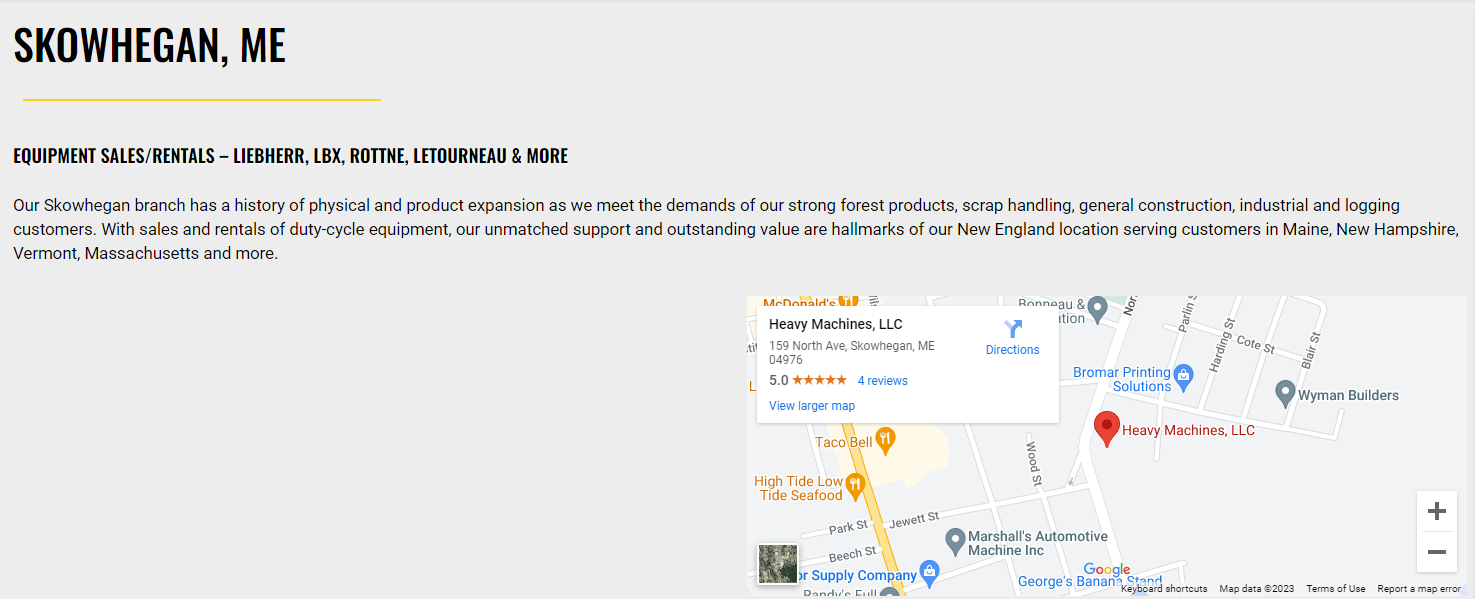
For example, if you provide IT services for large companies and notice that a majority of your clients are from Dallas, Texas, you can create a new page for “IT services in Dallas, Texas.”
This content helps you improve your local SEO strategy so you can reach more clients in your local region or new areas that you want to operate in.
13. Launch location-specific PPC ads for the highest-value locations
You can also leverage location data in your PPC campaigns. For example, you can bid on keywords that include the location of your highest-value leads and clients.
With a winning bid, plus a high Ad Rank and Quality Score, your PPC ad will be one of the first results users see when they search for your products or services in their local region.
14. Understand which locations provide the highest return on ad spend (ROAS) and optimize your advertising campaigns accordingly
Ensuring your marketing strategies drive a high ROI and ROAS is essential for helping your business grow. And leveraging location data in your ad campaigns can help you do exactly that.
Take a look at the users who click on and convert from your PPC ads. Take note of their location and identify which locations convert the most and provide the highest ROAS.
Now that you understand the locations of the users interacting with and converting from your PPC ads, you can optimize your PPC strategies. Instead of bidding on keywords for locations that don’t provide a high ROAS, you can bid on keywords and optimize your landing pages for locations that do.
B2B Programmatic Advertising Examples and Strategies
Wondering how to use first-party data for advertising? Here are three B2B programmatic advertising strategies that can help you level up your ad campaigns:
1. CRM pipeline retargeting
One of the best B2B programmatic advertising strategies is to retarget the leads in your CRM platform.
The leads in your sales pipeline already expressed an interest in your products or service. Use programmatic advertising’s unique ability to retarget those leads with personalized ads to keep your brand at the forefront of their mind and nurture them toward conversion.
Here are a handful of CRM pipeline retargeting strategies you can implement with a programmatic advertising campaign:
Advertise to your biggest customers to upsell to them
Use your CRM pipeline to discover your highest-value customers or clients and look for opportunities to upsell them.
Then, you can launch a programmatic advertising campaign to show these customers personalized advertisements for products or services they might like or upgrades to their current plan or service.
Advertise a complimentary product or service to a segment of customers
Another programmatic advertising strategy is to promote a complementary product or service to a specific segment of customers.
For example, let’s say you have a group of customers who currently invest in your IT services plan that includes web chat support. You could launch an advertising campaign to target this group of customers to encourage them to purchase your IT software that enables your team to remotely fix your client’s desktop errors and issues without any effort on their part.
This strategy enables you to offer this complimentary service to customers on your current web chat support plan, encouraging them to spend more money with your company.
Market to key accounts who visit certain pages on your website
CRM data lets you view how accounts and customers interact with content on your website.
Use this information in your programmatic advertising strategy to market to key accounts who visit bottom-of-the-funnel (BOFU) pages on your website.
For example, if a high-value account visits one of your services pages, you can send them a personalized ad tailored to their interests in that service to encourage them to come back to your site and become a client.
P.S. Our in-house programmatic advertising software, AdTechFX, enables you to easily target the IP addresses of accounts that visit your website. Contact us to learn more about AdTechFX!
Advertise to accounts you spoke with but didn’t sell
Next on our list of CRM retargeting programmatic advertising strategies is to launch targeted ads to accounts your sales team pitched or spoke with but didn’t sell.
This strategy is a great way to re-engage those leads that didn’t convert. A CRM platform like Nutshell allows you to view all your lost deals to easily identify these types of accounts.
Then, you can use a tool like AdTechFX to easily target those accounts with personalized re-engagement ads that remind them of your brand and entice them to speak with your sales team once again.
Advertise to accounts who canceled with you in the past
Another effective CRM retargeting strategy is promoting your products or services to accounts who previously canceled with you.
If an account decides to leave your company and partner with a competitor, you might not have to say goodbye to them forever. Use your programmatic advertising software to target the lost accounts in your CRM platform with engaging advertisements that highlight the benefits of working with your brand over competitors.
Advertise seasonal promotions to key accounts
Next on our list of CRM retargeting programmatic advertising examples is advertising seasonal promotions to key accounts.
Use your CRM platform to locate your highest-value customers or accounts. Then, launch an ad campaign that promotes special seasonal offerings on your products or services. For example, you could offer a special Christmas discount on a plan upgrade or buy one product and get another at a discount price offer.
Advertise to key stakeholders at organizations in your sales pipeline
Looking for more ways to target accounts in your CRM pipeline? No problem.
Try using your programmatic ad campaign to advertise to key stakeholders at organizations in your sales pipeline.
Launch personalized ads that resonate with stakeholders and leadership departments at high-value organizations currently in your sales pipeline to keep your brand at the forefront of their minds and highlight that your company offers the solutions they need.
Run branded ads to stay top of mind
Branded advertisements help you establish brand awareness for your company to attract new clients and increase brand loyalty.
You can use a programmatic advertising campaign to leverage first-party data to ensure your branded ads reach more members of your target audience, helping you increase your visibility, expand your reach, and keep your brand top of mind.
10. Account-based retargeting
With powerful programmatic advertising tools like AdTechFX, you can successfully leverage your first-party data to retarget specific companies and accounts.
For example, with AdTechFX, you can retarget the IP addresses of companies that visited your website. As a result, you can reach more companies that expressed an interest in your products or services, so you can remind them of your brand and encourage them to become a client.
11. Contextual ads
Searching for more B2B programmatic advertising use cases? Try implementing contextual ads with your programmatic advertising software.
Contextual ads are advertisements that are placed on a website based on what the website is about.
For example, if your company offers accounting services, you can use contextual ads to place your an ad for your accounting services on a webpage covering a topic about accounting.
With contextual ads, your target audience will see relevant ads when they are researching topics related to your brand, helping you generate more web traffic and leads.
B2C first-party data examples and strategies
Is your B2C company sitting on a pile of first-party data and not sure how to use it to improve your marketing strategies?
You’re in the right place. Below, we’re diving into 16 B2C first-party data examples to help you leverage your data for better marketing results and revenue.
So, keep reading to gather insights into how to use first-party data like:
Let’s get started!
Sales and purchase history
Sales performance and purchase history reports can give you tons of valuable insights into your target audience. Plus, you can use that information to boost your future sales.
Here are five B2C first-party use cases for purchase data:
1. Discover your most popular products or services
Analyze your purchase data to discover which products or services you sell the most and who purchases them.
For example, you might notice that women between the ages of 20 and 30 purchase your best-selling product the most.
2. Optimize ad campaigns, web pages, and content for your most popular products or services
Now that you’ve identified your best-selling products or services and who purchases them the most, you can leverage those insights to optimize your marketing strategies.
Optimize the landing pages and web copy of your most popular product and service pages to resonate with the people who purchase your offerings the most, so you can earn more conversions.
You can also launch targeted social media and programmatic ad campaigns to reach the people most likely to purchase your best-selling products, boosting your sales and revenue in the long run.
3. Forecast future sales
Identifying your sales trends is key to planning strategies to help set your business up for future success.
Use your purchase and transaction data to analyze yearly sales trends. For example, you might notice that your sales tend to peak in the summer months and fall slightly behind in the winter months.
With these insights, you can plan your marketing strategies accordingly so you maximize revenue in your worst and best months.
4. Identify holes in your sales process
Purchase and transaction data can also tell you a lot about your current sales process. If you’re not earning the sales you forecasted you would, it could signal that something is causing your prospects to drop out of your sales funnel and not complete their purchases.
In this case, one of the best B2C first-party data strategies is to analyze your current sales pipeline to locate where your leads fall out of your pipeline. Then, you can begin to patch the holes in your sales funnel to convert more leads and increase your sales.
5. Email product or service recommendations
If you have a list of your customers’ purchase history, keep them engaged with your brand by emailing them product or service recommendations that they might also like depending on their past purchases.
For example, if you own a sporting goods store and one of your customers buys a pair of running sneakers, you can email them to recommend your other running products, like leggings or shirts.
Sending recommendations is a great way to retain customers, build brand loyalty, and boost revenue.
Name and email address
Not sure how to leverage your collection of names and email addresses from your audience? We’ve got you covered.
Here are four B2C first-party data examples to help you utilize the names and email addresses of your prospects and customers for more sales and revenue:
6. Start an email newsletter
An email newsletter is a great way to keep consumers engaged with your brand. You can use your email newsletter to:
- Share industry news and business updates
- Detail what your company does and how you help consumers solve pain points
- Highlight your products or services
- And more
Your newsletters will help consumers and prospects learn more about your company and keep your brand at the forefront of their minds when it comes time to purchase.
Plus, you can include newsletter sign-up forms throughout your site, helping you capture even more emails and leads so you can convert more consumers into customers.
7. Promote your products or services
If you’ve got a list of your audience’s email addresses, you can send them emails highlighting your products or services.

You can send emails to:
- Showcase your newest offerings
- Encourage current customers to upgrade their service or product
- Send product or service recommendations
- And more
By using email to highlight your offerings, you can help more consumers discover your products and services so you can earn more sales.
8. Share content from your blog and website
Do you create custom content like blog posts, guides, videos, or articles? Guess what? You can share them with your audience through email!
Encourage your prospects and current customers to check out your latest blog post or video by sending them an email. The result? You’ll drive more traffic to your website, get more eyes on your content, and highlight your company’s expertise!
9. Offer exclusive discounts and deals
If you’re searching for a great way to boost your sales and revenue, sending emails to offer exclusive discounts and deals is a great way to do just that.
People love receiving a good deal, and it could just be the temptation consumers need to complete a purchase and remain loyal customers.
Plus, by offering exclusive deals and showcasing this benefit on your email sign-up forms, you can encourage more of your website visitors to sign up for emails. That means you can grow your email list, generate more leads, and earn even more conversions.
Location
Location data helps you uncover crucial information about your target audience that you can use to launch targeted ad campaigns and optimized marketing strategies.
Check out this list of B2C first-party data use cases for leveraging your audience’s location data:
10. Learn the location of your highest-value leads and customers
Analyze your location data to identify trends from your highest-value leads and customers. For example, you might notice that your biggest product or service sales typically come from one particular city or state.
With this information at your fingertips, you can better understand the location of the consumers who have the potential to drive the most revenue for your business. You can use this info to launch targeted ads that reach consumers in specific locations and create location-specific content that helps you improve your local SEO strategy.
11. Insert local keywords throughout your website
Now that you’ve analyzed your data to better understand the location of your target audience and highest-value consumers, you can begin to optimize your marketing strategies.
One such strategy you can optimize is your local SEO strategy. For example, suppose you notice that most of your current customers are in Denver, Colorado. In that case, you can begin to insert local keywords throughout your website, like “sporting goods stores in Denver, Colorado.”
Doing so can help your website appear in the search results when your highest-value potential customers search for your products or services online.
12. Create location-specific content and web pages
You can also use location data to create local content and web pages. For example, you can create a page to highlight your home renovation services for homeowners in Miami, Florida.
Then, you can target keywords like “kitchen renovation services in Miami, Florida” or “bathroom renovation services in Miami, Florida” to help your page rank at the top of the search results when your audience searches for those phrases.
13. Launch location-targeted PPC advertisements
Your collection of location data can also help you improve the performance of your PPC ads.
Now that you know the location of your highest-value consumers and the people most likely to buy your products or services, you can start bidding on those keywords. You can also optimize your landing pages to ensure they show relevant content for consumers in that location.
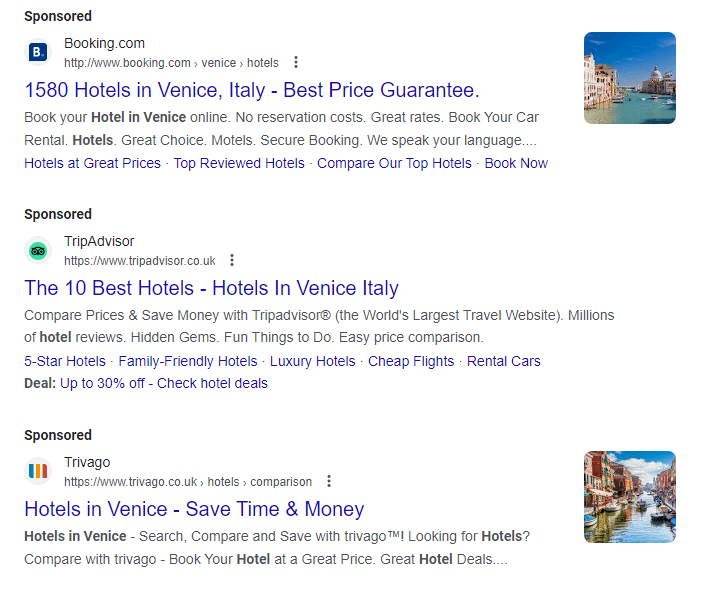
With a successful bid and optimized ad, you can help your website rank at the top of the search results when consumers search for your products or services in their local area.
Interests
Understanding your audience’s interests helps you personalize your marketing messages and implement strategies that help you reach even more consumers with similar interests.
Here are five B2C first-party data use cases for leveraging interest data in your marketing campaigns:
14. Segment your email list based on consumer interests
Did you know that segmenting your email list can result in a 760% increase in revenue? That’s because people love to read and engage with emails tailored to their unique needs and interests.
And that’s exactly what first-party interest data can help you do. Analyze your customers’ and leads’ interests and group together consumers that share similar interests.
Now you can craft personalized email messages for consumers in each interest group by highlighting your products or services and content they would enjoy most, boosting your email engagement as a result.
15. Create dynamic content to display personalized messages for different consumers
Dynamic content is content that changes based on who is looking at it. Equipped with the knowledge of your potential customer’s interests, you can implement dynamic content across your website to display content that will resonate with them.
So, instead of creating several pages for different interests, you can have one page that changes based on the consumer who views it so they always see relevant content to what they need.
16. Craft personalized ad campaigns that resonate with consumers’ interests
Interest data also helps you personalize your ad campaigns. For example, you can optimize the web copy on your ad landing pages to resonate with your audience’s unique interests.
You can also use interest data to improve your social media advertisements. For example, you can craft different social media ads for each of your products or services and use targeting options to display your ads to the users who have an interest in them.
B2C programmatic advertising examples and strategies
If you want to know how your B2C company can use programmatic advertising to drive revenue, we’ve got you covered.
Here are three top B2C programmatic advertising strategies to help you reach and convert your target audience:
- Streamline and personalize your paid ads for more conversions
- Create a variety of ad formats across channels
- Launch remarketing ads to consumers who previously interacted with your business
1. Streamline your ad purchasing process to launch more ad campaigns
Programmatic advertising helps your company save tons of valuable time and resources by automating your ad purchasing process.
That means you can launch more ad campaigns across multiple channels and platforms with little effort on your part.
Take advantage of programmatic advertising’s automation abilities to launch ad campaigns that increase your brand awareness and reach more members of your target audience.
2. Create a variety of ad formats across channels
Programmatic advertising also enables you to create a range of different ad formats and launch them across various channels and platforms.
For example, you can create videos, display ads, banner ads, social media ads, and much more.
Create multiple types of ad formats to display on all the channels your audience spends their time to significantly boost your online visibility while keeping your brand at the forefront of your audience’s mind.
Plus, you can use first-party data from your audience to personalize these ads based on interests, locations, and more, to improve the results of your ad campaigns.
3. Launch remarketing ads to consumers who previously interacted with your business
Remarketing ads allow you to reach consumers who previously interacted with your company but didn’t make a purchase.
These ads are extremely valuable because you can reach the people who directly showed an interest in your products or services and remind them of your brand to encourage them to complete a purchase.
With programmatic advertising, launching remarketing ads to high-value consumers who previously visited your website or interacted with your company is a piece of cake.
Ecommerce first-party data examples and strategies
First-party data is the key to unlocking more product sales for your ecommerce business. But how can you successfully use your customer and website visitor data to improve your product sales?
We’re here to tell just that! Keep reading to discover our top ecommerce first-party data examples and strategies for leveraging data like:
Transactions and transaction history
Your transaction history can give you tons of insights into your current marketing strategies and target audience.
Let’s dive into five ecommerce first-party data strategies for using your transaction data to power product sales:
1. Optimize Google Shopping ads for your best-selling products
If you use Google Shopping ads to showcase your products at the top of the Google search results, you can use your ad transaction data to understand which ads performed the best for your company.
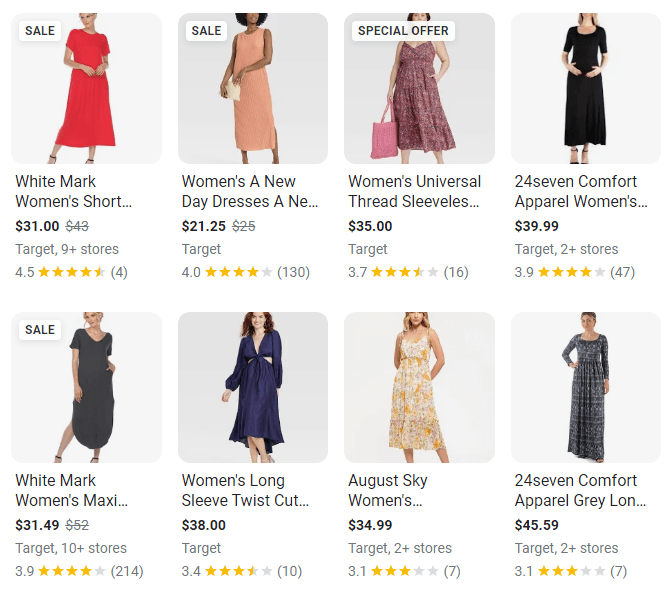
Then, you can optimize those ads for even more product sales in the future. For example, you can improve the ad landing pages to offer more information about your product or add more photos.
2. Forecast future product sales to prepare for seasonal shopping trends
As the seasons come and go, so do online shoppers. Use your transaction data to understand which months and seasons produce the most product sales for your company and which months tend to fall behind.
With this information in mind, you can plan your marketing budget accordingly and ensure you implement the right strategies to maximize your sales all year round.
3. Optimize your social media shop and shopping ads
Transaction data can also help you improve the performance of your social media shop and shopping ads.
For example, you can use your transaction data to ensure your Instagram shop showcases your best-selling products front and center.
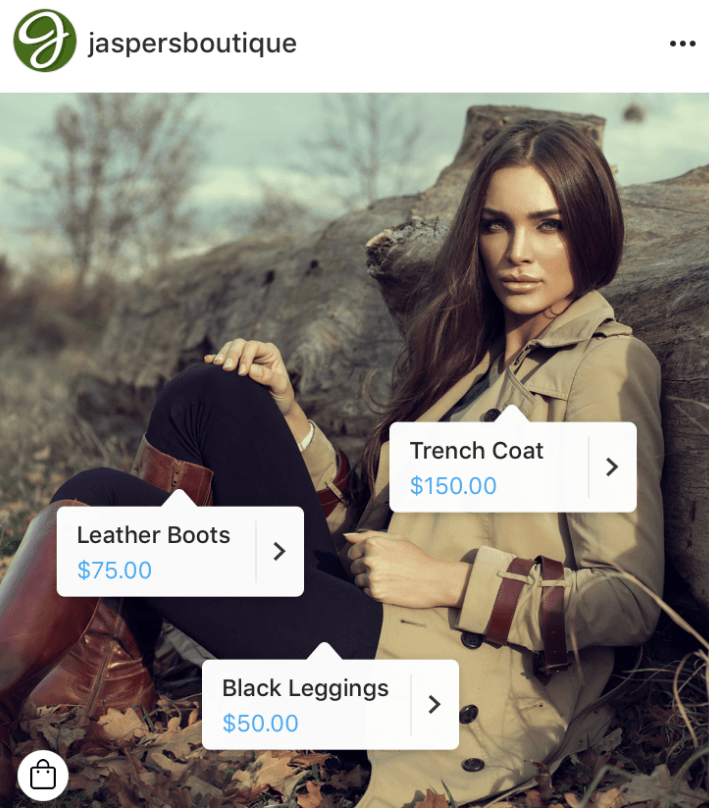
The same goes for your social media ads. Use your data to ensure your ads promote your audience’s favorite products so you can enjoy more sales.
4. Email product recommendations based on previous purchases
Use your customers’ previous purchases to understand their favorite types of products. Equipped with this data, you can email your customers recommendations on other products they may enjoy based on their previous purchases.
As a result, you can keep customers engaged with your business, increase your brand loyalty, and boost your sales all at the same time.
5. Optimize your Amazon ad campaigns to highlight your best-selling products
Not sure what to do with your Amazon transaction and purchase data? Use your data to understand which Amazon ads and products result in the most sales for your company.
With this information, you can ensure you optimize the ads that perform the best for your business, like improving your titles or photos, so you can consistently drive the best results.
You can also ensure you sponsor your most popular products to earn the highest ROI from your Amazon ad campaign.
Website traffic and behavior
Are you tracking your website traffic and visitor behavior but aren’t sure how you can use it to inform your marketing strategies? We’ve got you covered.
Check out these ecommerce first-party data use cases for leveraging your website traffic and behavior to drive more sales:
7. Implement and optimize strategies to increase your brand awareness and traffic
Your website traffic sources can tell you a lot about how your customers first discovered your business.
Once you know where your customers find your company online, you can begin to optimize your existing marketing strategies and implement new ones to further expand your reach and increase your brand awareness.
For example, suppose you discovered that most of your visitors discovered your website on Google. In that case, you can optimize your SEO campaign, or implement an SEO strategy, to help even more potential customers find your products online.
8. Optimize your most popular product pages
Your website traffic and visitor behavioral data can also reveal which pages your audience visits the most and spends the most time on your site. This information can help you discover your most popular content and product pages.
Use these insights to create more content your audience enjoys and optimize your most popular product pages for even more engagement, like including more product details.
9. Improve your website navigation
To sell your products online, you need to make sure your visitors can easily find the products they need and navigate to the correct page on your website.
Tracking your website behavior can help you understand how your visitors navigate your site and whether they find the info they need.

If you notice that many of your visitors click on multiple buttons or links, so don’t click anything at all, it may signal that you need to improve your navigation setup to help your audience find what they need.
For example, you may include a drop-down menu that groups your products together by similar uses or interests.
Email addresses
Collecting your customers’ and website visitors’ email addresses is a great way to stay in touch with your audience to increase brand engagement and loyalty.
Let’s dive into four ecommerce first-party data examples to highlight how you can use your collection of email addresses to drive sales for your business.
10. Highlight your loyalty program
Do you offer a loyalty program or plan to in the future? Email your customers to let them know about it and encourage them to sign up!
Loyalty programs are a great way to keep your customers returning to your business repeatedly because they can earn discounts and other special offers.
11. Offer exclusive discounts and deals on your products
You can also use your collection of email addresses to send your customers exclusive discounts and deals on your products to encourage them to make more purchases.
If you also have your customer’s birthday on hand, you can send them an email on their birthday offering them a discount to use on your products as a special treat.
12. Start an email newsletter to help customers stay up-to-date with your latest products
Consider creating an email newsletter to your current customers and subscribers to keep them informed about your brand.
You can share the latest news about your business and showcase your newest products to keep your brand at the forefront of your customers’ minds.
13. Ask customers to leave reviews after they purchase your products
People love to read reviews before they purchase a product.
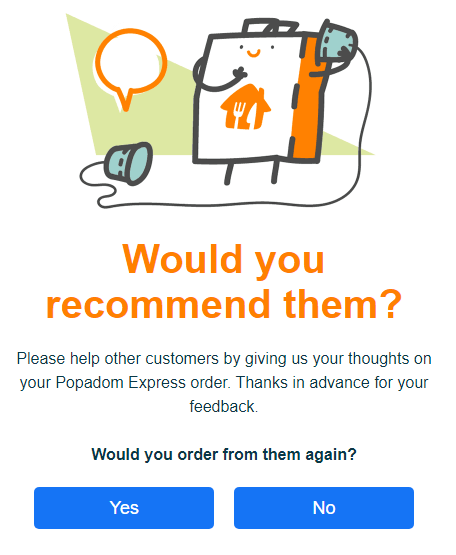
Boost your number of positive reviews by sending an email to your customers asking them to leave a review after they purchase one of your products.
Interests
Tracking your audience’s interests can help you craft sales-boosting marketing campaigns that drive more traffic to your online store and encourage your visitors to purchase more of your amazing products.
Let’s dive into three effective ecommerce first-party data use cases for leveraging interest data to improve your marketing strategies:
14. Segment your email list
If you have a long list of email subscribers who have different interests when it comes to your products, you can use your collection of interest data to segment your email list.
For example, you can create an email list for customers who are interested in your bath and body products and another list for customers interested in your makeup and cosmetics.
Once you’ve segmented your email list, you can then craft personalized email messages that resonate with your subscribers’ interests. For example, you can recommend new products they might like to encourage repeat purchases.
15. Create personalized social media ad campaigns
Social media ads enable you to get your products in front of the people most likely to purchase them. And interest data helps you do exactly that.
Many social media platforms allow you to use audience targeting features to ensure your ads reach the people most interested in your products. Analyze your interest data and then target your ads to the people who are most likely to purchase your products.
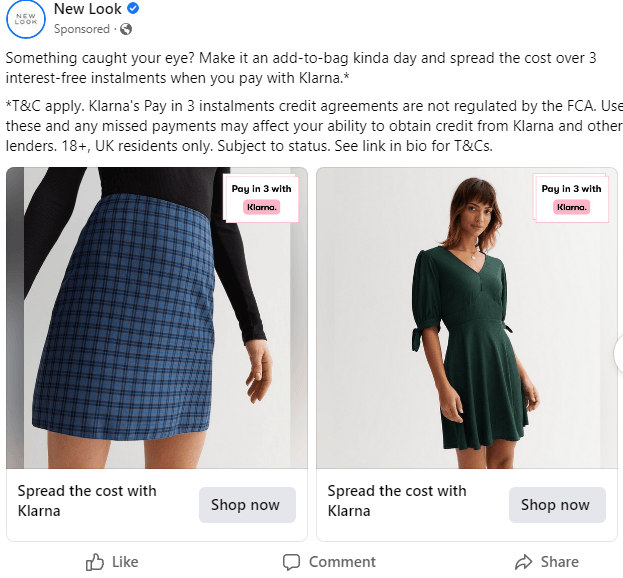
You can also use interest data to personalize your advertisements. For example, you can show product recommendations in your carousel ads to users who previously purchased similar products from your company or visited similar product pages on your website.
16. Personalize your visitors’ website experiences
By collecting interest data, you gain valuable insight into which products your website visitors want the most.
As a result, you can personalize their experience when they visit your website so you can demonstrate that you have what they need right away.
For example, you can recommend products at the top of your web page to help them navigate to the products they want.
Ecommerce programmatic advertising examples and strategies
First-party data and programmatic advertising go hand-in-hand. That’s because programmatic advertising platforms, like AdTechFX, use your first-party data to help you launch personalized and highly-targeted ads that reach and convert your target audience.
Keep reading to check out our top ecommerce programmatic advertising examples below to inspire your strategy.
1. Launch product ads across multiple channels and platforms
One of the biggest benefits of implementing a programmatic advertising campaign is that it can help you reach your audience on a larger scale.
That’s why launching product ads across multiple channels and platforms is first on our list of ecommerce programmatic advertising strategies.
Programmatic advertising enables you to streamline purchasing ad space, which means you can buy ad space across multiple platforms and channels, including social media, websites, connected TV (CTV), and more, in no time at all.
Promote your products across a handful of platforms to reach more members of your target audience, increase your brand awareness, and, most importantly, sell more products.
2. Implement remarketing ads to promote your products to consumers who already showed an interest in them
A programmatic advertising strategy can also help you launch effective remarketing campaigns across multiple platforms.
Consumers don’t usually make a purchase the first time they interact with a brand. For example, they may visit some of your product pages on your website after they find your site on Google. Then a few days later, they may scroll through your social media carousel ad to browse more of your products.
With programmatic advertising, you can launch remarketing ads to the consumers who already showed an interest in your products across multiple platforms, so you can always reach them where they spend their time.
3. Experiment with different ad formats to showcase your products
Programmatic advertising also enables you to create various types of ads, like videos, banner ads, display ads, and more.
Use your programmatic advertising campaign to launch a variety of ad formats across different channels and platforms to create a true brand awareness campaign.
Some consumers respond more to one ad type on one platform than another. Plus, you can analyze the results of your ads later to understand which ad formats performed the best. As a result, you can then optimize those ads and incorporate them more throughout your campaign to drive more product sales for your company.
Our digital marketing campaigns impact the metrics that improve your bottom line.
See Our Approach
$10 billion

24 million

7.14 million
Leverage first-party data for incredible marketing results with WebFX
Collecting the right data, gathering insights, and implementing data-driven marketing strategies is no easy feat. If you’re finding it tricky to collect and leverage first-party data, WebFX can help!
Our industry-leading technology, RevenueCloudFX and AdTechFX, enables you to access over 1 billion data points to inform your marketing strategies.
Plus, our team of over 500 subject-matter experts (SMEs) can help you maximize your revenue with your data every step of the way.
Give us a call at 888-601-5359 or contact us online to discover how our do-it-for-you digital marketing services can help you turn your data into a revenue-driving solution.
-
 Abby is a data-driven content marketer with certifications in inbound marketing and content marketing. She’s written hundreds of articles covering digital marketing topics — a few of her specialties include first-party data, marketing and data analytics, marketing strategy optimization, and SEO. When she isn’t writing or optimizing content, Abby loves to spend time reading the latest mystery novel, having movie marathons with lots of snacks, and jamming out to Shania Twain.
Abby is a data-driven content marketer with certifications in inbound marketing and content marketing. She’s written hundreds of articles covering digital marketing topics — a few of her specialties include first-party data, marketing and data analytics, marketing strategy optimization, and SEO. When she isn’t writing or optimizing content, Abby loves to spend time reading the latest mystery novel, having movie marathons with lots of snacks, and jamming out to Shania Twain. -

WebFX is a full-service marketing agency with 1,100+ client reviews and a 4.9-star rating on Clutch! Find out how our expert team and revenue-accelerating tech can drive results for you! Learn more
Try our free Marketing Calculator
Craft a tailored online marketing strategy! Utilize our free Internet marketing calculator for a custom plan based on your location, reach, timeframe, and budget.
Plan Your Marketing Budget
Table of Contents
- First-party data and programmatic advertising: A complete introduction & refresher
- B2B first-party data examples and strategies
- B2B Programmatic Advertising Examples and Strategies
- B2C first-party data examples and strategies
- B2C programmatic advertising examples and strategies
- Ecommerce first-party data examples and strategies
- Ecommerce programmatic advertising examples and strategies
- Leverage first-party data for incredible marketing results with WebFX

Proven Marketing Strategies

Proven Marketing Strategies
Try our free Marketing Calculator
Craft a tailored online marketing strategy! Utilize our free Internet marketing calculator for a custom plan based on your location, reach, timeframe, and budget.
Plan Your Marketing Budget
What to read next





